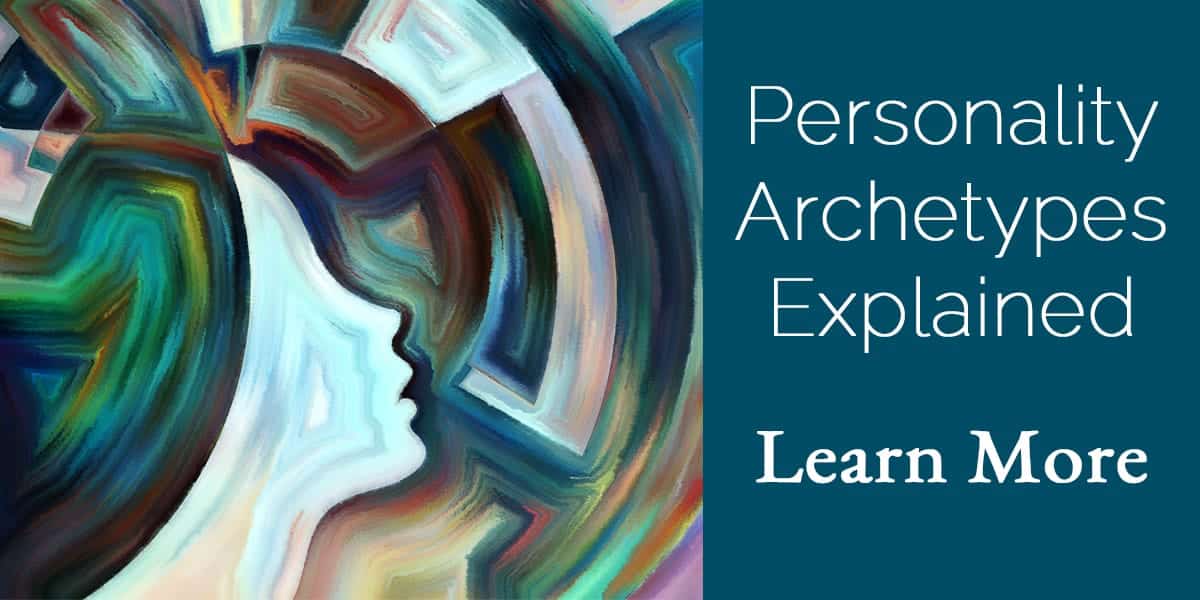Empath Archetype
Let’s all help amplify voices, dispel myths, foster acceptance, and celebrate neurodiversity during Neurodiversity Awareness Month and Autism Awareness Month this April.
Being an Empath
There is overlap between people who have the empath archetype and those who are neurodivergent. As to the extent of that overlap, I am uncertain, but my guess is that it’s quite extensive. I say this as a member of both groups, having plenty of experience with being an empath and falling somewhere along the autism spectrum. I also have multiple close family members who are one or both of these.
Neurodivergence includes autism, Sensory Processing Disorder (SPD), Highly Sensitive People (HSP), ADHD, synesthesia, and many other variations from neurotypical.
Unique Sensory Processing
Most types of neurodiversity include an unusual way of processing sensory information, either being over- or under- sensitive to sensory input. The empath archetype also has this pattern.
Our bodies have myriad ways of sensing the world around us. This is the case before we look at more esoteric things such as intuition, clairvoyance, etc. Let’s start with the basic five senses: touch, hearing, taste, smell and sight.
An important keyword here is “exteroception”. This is the sense of what is happening outside of our bodies. The basic five senses inform our exteroception, so are components of it. People with the empath archetype often focus on their heightened sense of exteroception. They feel especially sensitive to the external world around them. This includes the emotional lives of others.
To learn more about sensitivity and being a Highly Sensitive Person, read my article on the “Princess and the Pea Story: Valuing Sensitivity.“
Basics of Interoception
In contrast to exteroception, we also have the sense of “interoception” which is the ability to perceive what is happening within our bodies. This is the sense through which we feel our own hunger, relaxation, pain, temperature, joy, grief, etc. Interoception tells us about our emotional and physical states. When someone tells you to “check in with your body” or to “talk about how you are feeling”, you are using your sense of interoception. Somatic practices exercise interoception. When a person would like to become more “embodied” this is the sense they wish to heighten.
These two sensory systems are not mutually exclusive. We don’t have one set of sensors for internal conditions and another for external inputs. The sensors and neuropathways we use to sense what is around us and in us are interwoven. Exteroception and interoception dance.
Challenge of the Empath Archetype
This is where the challenge of the empath archetype comes in. When a person’s empathic abilities are underdeveloped, the person will not be able to discern which input is outside of her system and which is happening within her body. She doesn’t know what is and isn’t hers. She can’t tell the difference between someone else’s pain and her own. The unaware empath is unable to locate the origin of a sensation.
In the challenged state, the empath archetype has us picking up other people’s feelings. We mistake our friend’s anguish for our own. Soon we are carrying a lot of emotional baggage around that doesn’t belong to us. This emotion and sensation overload takes a toll on our bodies. This is the shadow side of being an empath that most people are familiar with.
This is not to say that we don’t share suffering or joy with others, we do all of the time. But, if we are constantly commingling our emotions, we misjudge the amplitude of these feelings. If we combine our grief with the global grief about a war, we are saddled with a crippling sadness beyond what our systems can handle.
POLL Results
Do you consider yourself an empath? And/or are you neurodivergent?
- I’m an empath = 19%
- I’m neurodivergent = 11%
- Both are true = 70%
(27 VOTES)
Share your answer to these questions in the comments below!
Questions to Ask
To help bring out the gifts of the empath archetype, the first step is to learn about the exteroception and interoception systems. The most helpful question here is, “Where is this sensation coming from?” The answer could be “out there”, “in here”, or “both”. When the answer is “both places”. Then the next question is, “How much is coming from the different places?” Or put another way, “What here is mine and what here is that of others?”
The next challenge for someone with the empath archetype is to then modulate their sensory systems consciously versus unconsciously.
When an empath’s sensory system gets overwhelmed, their automatic, unconscious reflex is to shut down. It’s the equivalent of a hedgehog rolling into a ball. Nothing gets in our out. Nothing happens internally either. This stillness can offer respite, but it is not a lasting solution. As soon as the empath turns their senses back on, it all comes rushing back full force, or maybe even stronger.
This swing between hypersensitivity (feeling too much) and hyposensitivity (feeling too little) is a classic challenge for someone who is unaware of how to work with the empath archetype.
Bringing Out the Gifts
The gift of the empath archetype is navigating the sensory landscape and discerning these key things.
- Where is the sensation/emotion/experience originating?
- How much is coming from each location?
- Which of my senses do I to turn up or down to take care of myself?
This last pieces is really important. As an empath who feels everything strongly, you might be asking, “When would I ever want to feel something more?” A common myth about the empath archetype is that they feel everything too much and they need to set better boundaries. This myth encourages a reactionary shut down that is problematic. See-sawing back and forth between wide open and shut down causes exhaustion and stress.
Take this example: A woman who is unaware of how to work with the empath archetype is flooded by the anguish of a mass shooting in her community. She spends weeks drowning in terror and despair. She scrambles around trying to be there for others who were impacted, but never feels like she’s helping much. This woman continues to take on more suffering the more people she sees. Total exhaustion and physical illness hit. Then she spends days in bed. A chronic illness may settle in. The whole time she feels totally helpless in the face of such an atrocity.
Story of a Balanced Empath
Let’s say this woman is in the gifted empath archetype. She is aware of how to work with the patterns. Here’s how the same circumstances would look. She is flooded with the terror and anguish of the mass shooting. She pauses to turn down the loads of external suffering (exteroception), and turn up her more quiet interoception to “check in” with her own body and system.
The empath archetype in her reminds her to take a break to honor her own emotions first. She goes for a walk in the woods. She turns her exteroception back up to take in the beauty, peace, and comfort of nature. Listening again to her interior, she finds a sense of resolve and strength.
She is ready to visit a friend at the hospital who was wounded in the shooting. She keeps her exteroception at medium volume, micro-tuning it as needed. When her interoception tells her she has given all the care she has for today, she gives her friend a fully present, loving hug and leaves.
Her retreat allows her energy to re-engage day after day, for as long as her friend needs. The woman with the empath archetype is present the whole time to feel the depth and breadth and beauty of life. She feels connected and loved. In the aftermath of the tragedy, her days ebb and flow in the way described above. Always, the woman with the gifts of the empath archetype comes back to center. Always, she listens, senses, and adjusts.
…
To learn more about neurodivergence, especially in women, I highly recommend the book “Divergent Mind: Thriving in a World that Wasn’t Designed for You” by Jenara Nerenberg.
For more information on sensory differences, interoception, and all EIGHT of our senses see:
https://neurodivergentinsights.com/blog/8-senses
https://www.healthline.com/health/childrens-health/sensory-issues-in-children#sensory-processing
Are you an empath? Do you have the empath archetype? Learn your archetypes and how they shape you so you can become more of your authentic self in the
> Personality Archetypes Explained Workshop <





Leave a Reply
Want to join the discussion?Feel free to contribute!